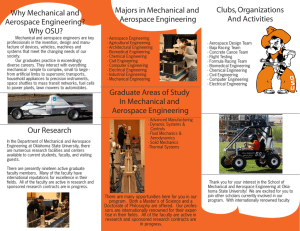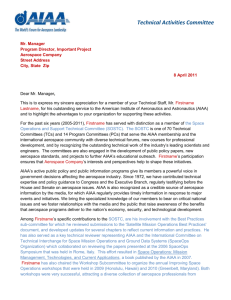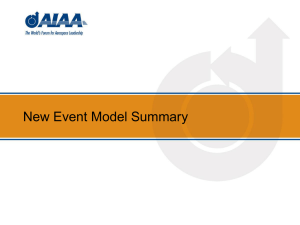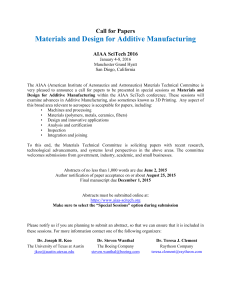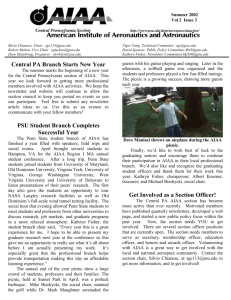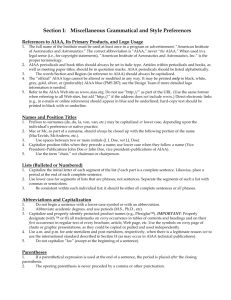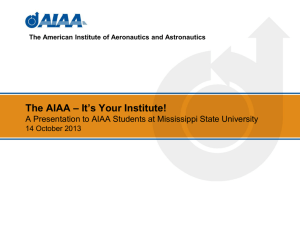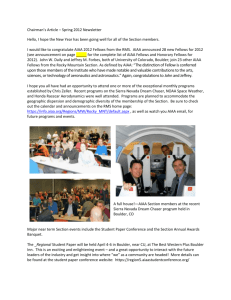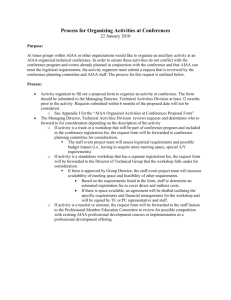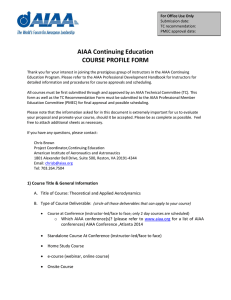Systems Integration Panel Discussion
advertisement
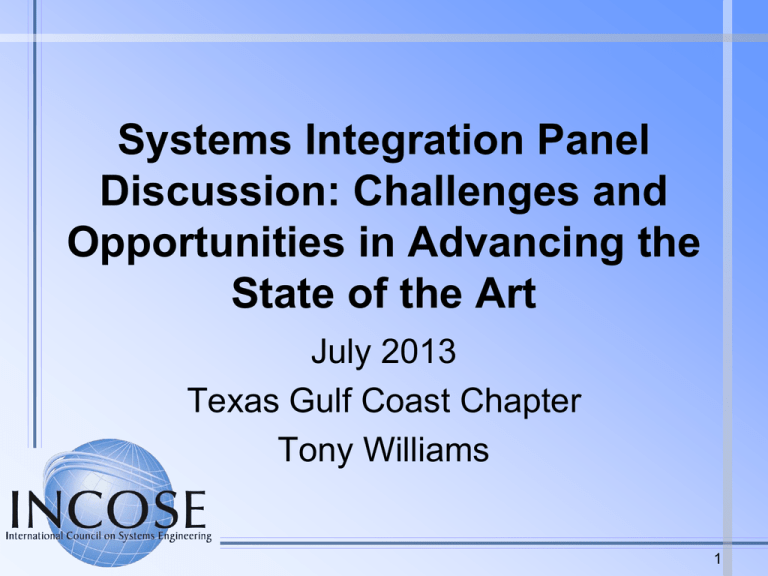
Systems Integration Panel Discussion: Challenges and Opportunities in Advancing the State of the Art July 2013 Texas Gulf Coast Chapter Tony Williams 1 Today’s Panel • Interactive Discussion of Systems Integration Challenges and Opportunities – Depending on interest, this might become a thrust area for the chapter with additional actions and activities – Note – Integration challenges and opportunities are not just limited to ‘complex’ systems • Format – – Introduction – Panelist Presentations • Jeff Hahn – Emergency Mask Experiences • Rob Randall – Baker Hughes Integration Challenges & Lessons Learned – Interactive Discussion – Audience Participation Requested – Wrap-up & Take-aways 2 AIAA Initiative for Addressing Complex Systems Integration • ASI-WG Charter - The Aerospace Systems Integration Working Group is a forum to promote and contribute to aerospace systems integration across the spectrum of applications ranging from traditional systems to complex systems and systems of systems. • Status January, 2012: Aerospace Systems Integration-Working Group (ASI-WG) proposed and formed May, 2012: AIAA TAC officially approved the establishment of ASI-WG • Activities (January 2012 to Present) Monthly Teleconference, Yearly Face-to-Face Meeting Developing AIAA G135: Guide to Aerospace Systems Integration Conducting/participating in Panel discussions (CASE, New Horizon, ASM, etc) Presentation to AIAA TCs and PCs INCOSE participation 3 ASI Working Group Panel @ ASM 2013 • • Topic: Aerospace Systems Integration (ASI) Panel Session - Challenges and Opportunities in Advancing the State of the Art Synopsis: This ASI-WG initiative intends to establish a dialog across the major AIAA events around the general topic of Aerospace Systems Integration. • Participants: • Supports AIAA’s vision to address one of the most challenging issues facing our community, specifically complex systems integration. We often excel at developing individual technologies, but fail when attempting to integrate these, on schedule and budget, into operating systems. Format: Panel discussion with Aerospace Systems Integration leaders discussing initiatives to improve the state of the art Laura McGill (Panel Moderator), Vice President, Raytheon Corporation, Vice President, AIAA Standard Committee Ron Kohl, President, R. J. Kohl & Assoc. Anna-Maria McGowan, NASA lead on Morphing Aircraft Systems Program, NASA Langley Dr. David Finkleman, Senior Scientist Center for Space Standards and Innovation Analytical Graphics, Inc. Dr. Brian M. Argrow, Professor, Aerospace Engineering Sciences, Research and Engineering Center for Unmanned Vehicles, University of Colorado Tony Williams (Panel Coordinator), Chief Engineer, Systems Engineering and Integration, Jacobs Engineering, NASA Johnson Space Center Time/Location: Time/Day: 3pm-5:30pm, January 7 (Monday), 2013, Location: Austin 6, Gaylord Texan Convention Center 5 9 Now known as the JSpOC Mission System (JMS) Key Objectives – Collecting & integrating disparate information to create situational pictures Creating space tasking framework Complexities: Collaborative architecture composed of multiple systems, with varying missions, stakeholders, lifecycle phases…. Source: Command and Control of Space Forces - A Weapon System Approach, 25 Aug 2005, AFSPC/XOZ Presentation to NDIA, T. SAFER Integrating MBSE Into Ongoing Projects: Requirements Validation and Test Planning for ISS SAFER, AIAA Annual Technical Symposium, May 18, 2012, G. Pierce/T. Williams Complexities: Multiple Disciplines: Propulsion, Software, GN&C, Electronics, Firmware, EVA operations, Human Safety Criticality Challenges: Multiple contributing organizations within JSC Engineering Assumption thatbuy-in the SAFER revision is easy and doesn’tfrom need same level of Gaining on vision and technical approach matrixed rigor team development Managing and controlling interfaces Integrating MBSE Into Ongoing Projects: Requirements Validation and Test Planning for ISS SAFER, AIAA Annual Technical Symposium, May 18, 2012, G. Pierce/T. Williams Lessons/Summary • Two systems at different levels of complexity Challenges Opportunities/ Lessons Learned Space C2 WS SAFER Gaining buy-in on vision and participation from ‘quasi-voluntary’ contributors Gaining buy-in on vision and technical approach from matrixed development team Defining and managing information interfaces Managing and Improvements in interface Controlling interfaces management provide high leverage (Education, tools, methodology, Modelbasing) Importance of constantly communicating the vision Our Panelists • Jeff Hahn – Crew Systems and EVA Projects Section manager, Jacobs Engineering @ NASA JSC • Rob Randall – Systems Engineering Manager, Baker Hughes 17
